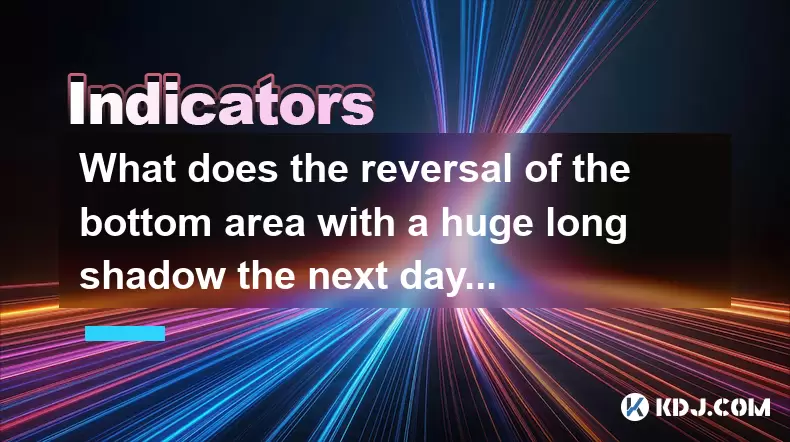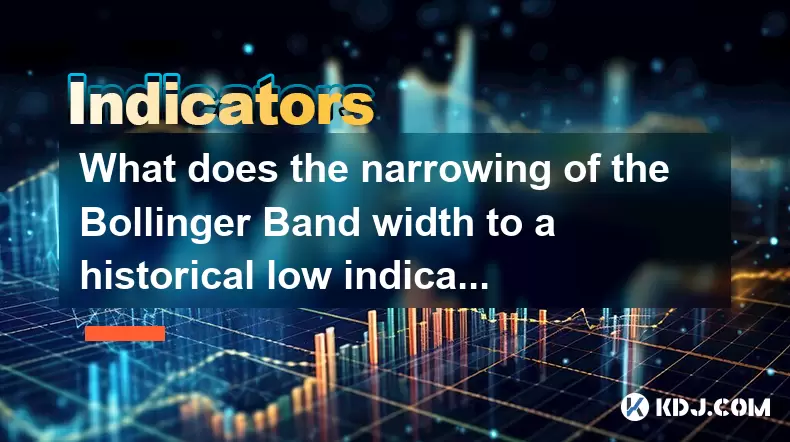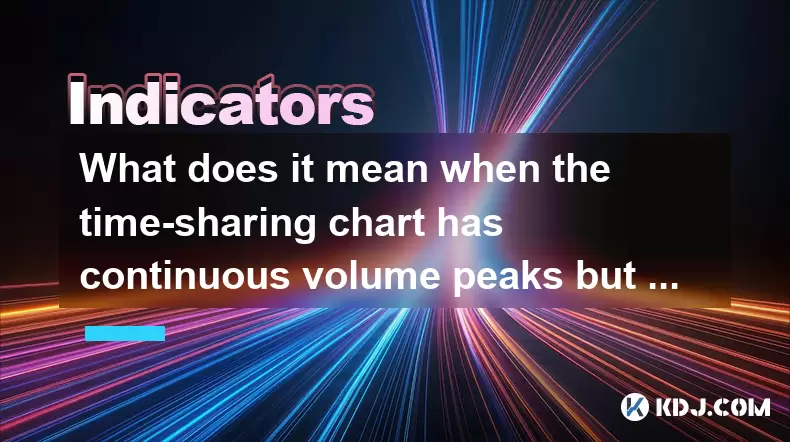-
 Bitcoin
Bitcoin $102,936.6333
3.84% -
 Ethereum
Ethereum $2,303.2860
5.42% -
 Tether USDt
Tether USDt $1.0008
0.05% -
 XRP
XRP $2.0592
5.18% -
 BNB
BNB $630.3035
4.07% -
 Solana
Solana $139.0485
7.91% -
 USDC
USDC $1.0000
0.01% -
 TRON
TRON $0.2722
3.17% -
 Dogecoin
Dogecoin $0.1572
6.30% -
 Cardano
Cardano $0.5543
5.37% -
 Hyperliquid
Hyperliquid $37.0789
8.94% -
 Bitcoin Cash
Bitcoin Cash $454.8827
2.38% -
 Sui
Sui $2.6088
10.94% -
 UNUS SED LEO
UNUS SED LEO $9.0751
0.81% -
 Chainlink
Chainlink $12.1078
6.95% -
 Stellar
Stellar $0.2351
5.76% -
 Avalanche
Avalanche $17.1771
7.35% -
 Toncoin
Toncoin $2.8438
5.50% -
 Shiba Inu
Shiba Inu $0.0...01112
7.74% -
 Litecoin
Litecoin $82.9385
5.91% -
 Hedera
Hedera $0.1409
8.82% -
 Ethena USDe
Ethena USDe $1.0006
0.01% -
 Monero
Monero $301.2470
1.77% -
 Dai
Dai $1.0001
0.01% -
 Polkadot
Polkadot $3.2751
3.88% -
 Bitget Token
Bitget Token $4.0623
2.00% -
 Uniswap
Uniswap $6.5652
8.27% -
 Pepe
Pepe $0.0...09287
7.77% -
 Pi
Pi $0.5146
6.32% -
 Aave
Aave $242.0173
11.35%
What does the reversal of the bottom area with a huge long shadow the next day mean?
A candlestick with a long lower shadow in a downtrend signals potential bullish reversal as buyers reject lower prices and push the market back up.
Jun 23, 2025 at 11:14 pm

Understanding the Reversal of the Bottom Area with a Huge Long Shadow
In technical analysis within the cryptocurrency market, candlestick patterns play a crucial role in predicting potential price movements. One such pattern is the reversal of the bottom area with a huge long shadow. This typically refers to a scenario where a candlestick forms at the lower end of a downtrend and exhibits a long lower shadow, often accompanied by a small body located near the top of the candle's range.
The presence of a huge long shadow indicates that sellers pushed prices significantly lower during the trading period but were met with strong buying pressure that drove prices back up toward the opening level. This suggests that market sentiment may be shifting from bearish to bullish as buyers start to take control.
What Does the Long Lower Shadow Represent?
A candlestick with a long lower shadow is generally seen as a sign of rejection of lower prices. In the context of a downtrend, this can indicate that the selling pressure is weakening and that buyers are stepping in at key support levels. The longer the shadow, the stronger the rejection signal becomes.
- Price was pushed down significantly
- Buyers entered the market and pushed price back up
- This creates a psychological floor for future support
In crypto markets, which are known for their volatility, these types of candlesticks often appear before a meaningful bounce or trend reversal. However, it's essential to wait for confirmation from subsequent candles or volume indicators before making any trading decisions.
How to Identify a Reversal Candle with a Long Lower Shadow
Identifying this pattern involves several key elements:
- Candle must appear after a clear downtrend
- Body should be relatively small
- Lower shadow should be significantly longer than the body (ideally 2–3 times the size)
- Little or no upper shadow
For example, if Bitcoin has been falling for several days and suddenly forms a candle with a very long lower wick, it might suggest that a bottom is forming. Traders who recognize this pattern early can position themselves ahead of a potential rally.
It’s also important to check other indicators like volume and RSI to confirm the strength of the reversal. A surge in volume on the candle with the long lower shadow adds credibility to the reversal signal.
What Should Traders Do After Seeing This Pattern?
When traders spot a reversal candle with a long lower shadow, they should not immediately assume that the trend has changed. Instead, they should follow a structured approach:
- Wait for confirmation: Look for the next candle(s) to close above the high of the reversal candle
- Check for volume increase: Higher-than-average volume supports the idea of increased buying interest
- Monitor RSI or MACD: These indicators can provide additional clues about momentum shifts
Traders can also set stop-loss orders below the low of the long shadow to manage risk effectively. If the price holds above that level, it reinforces the validity of the reversal. Conversely, if the price breaks below the shadow again, it may invalidate the pattern.
In fast-moving crypto markets, reacting too quickly can lead to losses. Therefore, patience and confirmation are critical when interpreting this candlestick formation.
How Reliable Is This Pattern in Crypto Markets?
While the reversal with a long lower shadow is a well-known pattern in traditional markets, its reliability in crypto depends on several factors:
- Market conditions: It works best in clearly defined downtrends
- Timeframe: Higher timeframes (e.g., 4-hour or daily charts) tend to give more reliable signals
- Asset liquidity: Major cryptocurrencies like Bitcoin and Ethereum are more likely to produce trustworthy signals compared to lesser-known altcoins
Because crypto markets are prone to sudden pump-and-dump activities and whale manipulation, false signals can occur frequently. Therefore, using this pattern alone is not sufficient for decision-making. Combining it with moving averages or Fibonacci retracement levels can help filter out noise and improve accuracy.
Additionally, traders should avoid relying solely on visual analysis without incorporating some form of quantitative verification. Tools like Ichimoku Cloud or Bollinger Bands can help contextualize the reversal signal within broader price action.
Frequently Asked Questions
Q: Can this pattern appear in uptrends as well?
Yes, although less commonly. When a similar pattern appears in an uptrend with a long upper shadow, it may signal a bearish reversal rather than a bullish one.
Q: What does it mean if the long shadow occurs on high volume?
A long shadow with high volume increases the likelihood of a genuine reversal because it shows that many participants are actively involved in rejecting the current trend.
Q: How long should I wait for confirmation after seeing this candle?
Ideally, you should wait for 1–2 subsequent candles to close above the high of the reversal candle before considering the trend change confirmed.
Q: Is this pattern applicable to all cryptocurrencies?
While it can appear across various assets, it tends to be more reliable in high-cap, liquid cryptocurrencies like BTC, ETH, and SOL. Smaller tokens may generate misleading signals due to volatility and low trading volume.
Disclaimer:info@kdj.com
The information provided is not trading advice. kdj.com does not assume any responsibility for any investments made based on the information provided in this article. Cryptocurrencies are highly volatile and it is highly recommended that you invest with caution after thorough research!
If you believe that the content used on this website infringes your copyright, please contact us immediately (info@kdj.com) and we will delete it promptly.
- Crypto Penny Coins: Hunting for Monster Gains in 2025
- 2025-06-24 02:45:12
- Ethereum Whale Dips Into Crashing ETH: Smart Move?
- 2025-06-24 02:25:12
- Shiba Inu vs. Rival Tokens: Navigating the Cryptocurrency Craze in NYC
- 2025-06-24 03:10:22
- Stablecoin Scramble: Market Structure and Bill Passage in the Crypto Wild West
- 2025-06-24 02:45:12
- Circle Stock Soars: Surpassing USDC Market Cap After GENIUS Act Boost
- 2025-06-24 03:10:22
- Pepe Coin's Open Interest Hints at Potential Rally: A Trader's Guide
- 2025-06-24 02:50:12
Related knowledge

How to interpret that the time-sharing chart shows "volume and price rise together" but the MACD red column shortens?
Jun 24,2025 at 01:08am
Understanding the Concept of 'Volume and Price Rise Together'In cryptocurrency trading, when a time-sharing chart shows that both volume and price rise together, it is typically interpreted as a sign of strong buying pressure. This means more traders are entering long positions, pushing the price higher while increasing the trading volume. This phenomen...

Is it contradictory that the moving average system is arranged in a bullish pattern but the DMI shows a decline in trend strength?
Jun 23,2025 at 11:43pm
Understanding the Moving Average and DMI RelationshipIn cryptocurrency trading, technical analysis plays a crucial role in identifying potential trends and making informed decisions. Two of the most commonly used indicators are the Moving Average (MA) and the Directional Movement Index (DMI). While both tools aim to provide insight into market direction...

How to interpret that the Williams indicator quickly turns back in the overbought area but does not fall below the 50-axis?
Jun 24,2025 at 02:01am
Understanding the Williams %R Indicator in Cryptocurrency TradingThe Williams %R indicator, often referred to as Williams Percent Range, is a momentum oscillator used by traders to identify overbought or oversold conditions in financial markets, including cryptocurrency. It ranges from 0 to -100, where values above -20 are considered overbought and thos...

What is the significance of the gap formed by the gap opening not being filled within five days?
Jun 23,2025 at 09:42pm
Understanding Gaps in Cryptocurrency TradingIn the world of cryptocurrency trading, a gap refers to a situation where the price of an asset jumps from one level to another without any trading activity occurring between those two levels. This often happens over weekends or holidays when the market is closed, and significant news or events occur that impa...

What does the narrowing of the Bollinger Band width to a historical low indicate?
Jun 24,2025 at 02:35am
Understanding Bollinger Bands and Their Role in Technical AnalysisBollinger Bands, developed by John Bollinger in the 1980s, are a popular technical analysis tool used to measure market volatility. They consist of three lines: a simple moving average (SMA) in the center, typically over a 20-period setting, and two outer bands that are set at a standard ...

What does it mean when the time-sharing chart has continuous volume peaks but the price fluctuation is not large?
Jun 24,2025 at 03:49am
Understanding the Time-Sharing Chart in Cryptocurrency TradingIn cryptocurrency trading, time-sharing charts are crucial tools that help traders monitor real-time price movements and volume activity. These charts display data within specific time intervals—such as 1-minute, 5-minute, or 15-minute windows—and allow for granular analysis of market behavio...

How to interpret that the time-sharing chart shows "volume and price rise together" but the MACD red column shortens?
Jun 24,2025 at 01:08am
Understanding the Concept of 'Volume and Price Rise Together'In cryptocurrency trading, when a time-sharing chart shows that both volume and price rise together, it is typically interpreted as a sign of strong buying pressure. This means more traders are entering long positions, pushing the price higher while increasing the trading volume. This phenomen...

Is it contradictory that the moving average system is arranged in a bullish pattern but the DMI shows a decline in trend strength?
Jun 23,2025 at 11:43pm
Understanding the Moving Average and DMI RelationshipIn cryptocurrency trading, technical analysis plays a crucial role in identifying potential trends and making informed decisions. Two of the most commonly used indicators are the Moving Average (MA) and the Directional Movement Index (DMI). While both tools aim to provide insight into market direction...

How to interpret that the Williams indicator quickly turns back in the overbought area but does not fall below the 50-axis?
Jun 24,2025 at 02:01am
Understanding the Williams %R Indicator in Cryptocurrency TradingThe Williams %R indicator, often referred to as Williams Percent Range, is a momentum oscillator used by traders to identify overbought or oversold conditions in financial markets, including cryptocurrency. It ranges from 0 to -100, where values above -20 are considered overbought and thos...

What is the significance of the gap formed by the gap opening not being filled within five days?
Jun 23,2025 at 09:42pm
Understanding Gaps in Cryptocurrency TradingIn the world of cryptocurrency trading, a gap refers to a situation where the price of an asset jumps from one level to another without any trading activity occurring between those two levels. This often happens over weekends or holidays when the market is closed, and significant news or events occur that impa...

What does the narrowing of the Bollinger Band width to a historical low indicate?
Jun 24,2025 at 02:35am
Understanding Bollinger Bands and Their Role in Technical AnalysisBollinger Bands, developed by John Bollinger in the 1980s, are a popular technical analysis tool used to measure market volatility. They consist of three lines: a simple moving average (SMA) in the center, typically over a 20-period setting, and two outer bands that are set at a standard ...

What does it mean when the time-sharing chart has continuous volume peaks but the price fluctuation is not large?
Jun 24,2025 at 03:49am
Understanding the Time-Sharing Chart in Cryptocurrency TradingIn cryptocurrency trading, time-sharing charts are crucial tools that help traders monitor real-time price movements and volume activity. These charts display data within specific time intervals—such as 1-minute, 5-minute, or 15-minute windows—and allow for granular analysis of market behavio...
See all articles
























































































